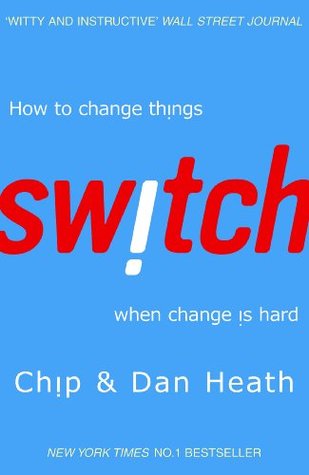More on this book
Community
Kindle Notes & Highlights
If you want people to eat less popcorn, the solution is pretty simple: Give them smaller buckets. You don’t have to worry about their knowledge or their attitudes.
Haidt says that our emotional side is an Elephant and our rational side is its Rider. Perched atop the Elephant, the Rider holds the reins and seems to be the leader. But the Rider’s control is precarious because the Rider is so small relative to the Elephant.
Change is hard because people wear themselves out. And that’s the second surprise about change: What looks like laziness is often exhaustion.
If the Rider isn’t sure exactly what direction to go, he tends to lead the Elephant in circles. And as we’ll see, that tendency explains the third and final surprise about change: What looks like resistance is often a lack of clarity.
Direct the Rider. What looks like resistance is often a lack of clarity. So provide crystal-clear direction. (Think 1% milk.) Motivate the Elephant. What looks like laziness is often exhaustion. The Rider can’t get his way by force for very long. So it’s critical that you engage people’s emotional side—get their Elephants on the path and cooperative. (Think of the cookies and radishes study and the boardroom conference table full of gloves.) Shape the Path. What looks like a people problem is often a situation problem. We call the situation (including the surrounding environment) the “Path.”
...more
To change behavior, you’ve got to direct the Rider, motivate the Elephant, and shape the Path.
Sternin and his small team of believers, working with a shoestring budget, managed to make a big dent in malnutrition. What makes it more remarkable is that they weren’t experts. They didn’t walk in with the answers. All they had was a deep faith in the power of bright spots.
Big problems are rarely solved with commensurately big solutions. Instead, they are most often solved by a sequence of small solutions, sometimes over weeks, sometimes over decades.
Our Rider has a problem focus when he needs a solution focus. If you are a manager, ask yourself: “What is the ratio of the time I spend solving problems to the time I spend scaling successes?”
Ambiguity is exhausting to the Rider, because the Rider is tugging on the reins of the Elephant, trying to direct the Elephant down a new path. But when the road is uncertain, the Elephant will insist on taking the default path, the most familiar path, just as the doctors did. Why? Because uncertainty makes the Elephant anxious. (Think of how, in an unfamiliar place, you gravitate toward a familiar face.) And that’s why decision paralysis can be deadly for change—because the most familiar path is always the status quo.
Destination postcards—pictures of a future that hard work can make possible—can be incredibly inspiring. The first graders dreamed of being third graders. Laura Esserman’s team imagined a new kind of breast care clinic that would cater to the needs of the patient.
You have to back up your destination postcard with a good behavioral script.
The “goal” was the same for both sets of customers: Buy eight additional car washes, get a reward. But the psychology was different: In one case, you’re 20 percent of the way toward a goal, and in the other case, you’re starting from scratch. A few months later, only 19 percent of the eight-stamp customers had earned a free wash, versus 34 percent of the head-start group. (And the head-start group earned the free wash faster.) People find it more motivating to be partly finished with a longer journey than to be at the starting gate of a shorter one.
What looks like a people problem is often a situation problem.


